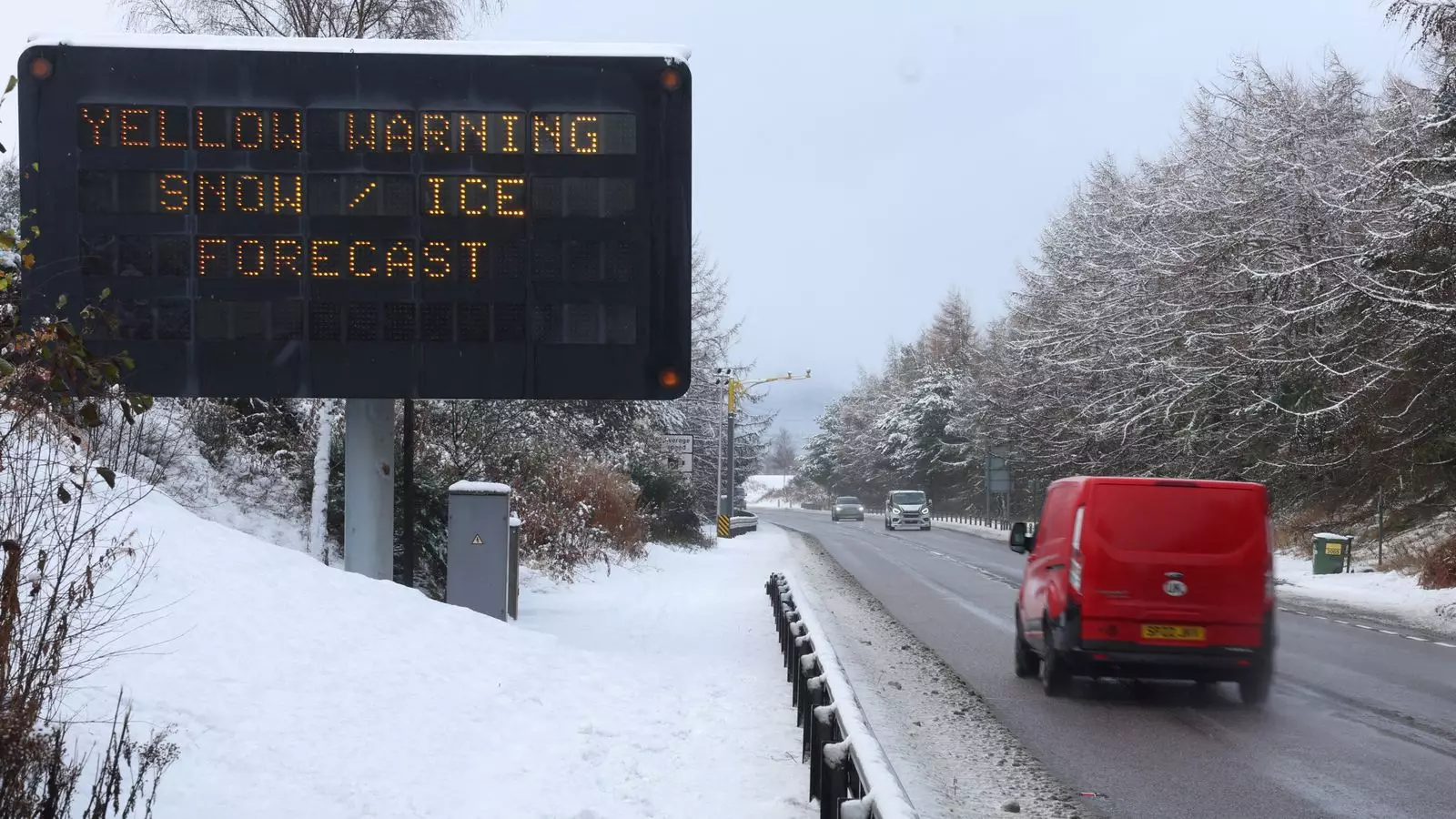Storm Bert’s recent arrival in the UK has unleashed a combination of snow, rain, and strong winds, dramatically affecting travel plans and raising alarms about potential flooding. As weather warnings cascade across various regions, residents and travelers are left grappling with the implications of these conditions. With 16 flood alerts issued across England and Scotland, the urgency to stay informed and cautious has never been more critical.
Understanding the Weather Warnings
The UK Met Office has implemented several weather warnings, categorized by severity. These range from yellow alerts, where people are advised to check forecasts and take precautionary measures, to amber warnings that indicate a higher likelihood of widespread disruption. The most severe, the rare red warning, has been assigned to specific areas of Ireland and indicates a dangerous weather scenario that poses a significant risk to life and travel.
In light of these warnings, certain regions are facing a severe weather alert, particularly in Yorkshire and northeast England, where snow accumulations are expected to disrupt daily life. Roads have become treacherous, with key routes like the A628 and A66 temporarily closed due to unsafe conditions. For the average traveler, this paints a grim picture, necessitating a reevaluation of plans and possibly abandoning travel altogether.
The impact of Storm Bert has been most acutely felt in Scotland, where the cancellation of events such as Christmas light switch-ons reflects the seriousness of the situation. Perth and Kinross Council’s decision to cancel festive gatherings is a clear indication of the disruption this storm has caused. Individuals in affected areas are encouraged to heed local advisories and perhaps embrace alternative holiday plans in light of safety concerns.
Despite the challenges posed by the inclement weather, major airports report that they do not anticipate significant disruptions. However, train services are another matter. Rail companies, recognizing the risks, have established new speed restrictions and canceled certain services. Customers are advised against traveling on specific routes, with train operators like ScotRail providing essential updates to ensure passenger safety.
Meteorologists have labeled this period as a “multiple hazard event,” indicating that the combination of heavy snow, rain, and gusty winds creates complicated and potentially dangerous conditions. Predictions suggest that snowfall will occur rapidly, particularly in northern England and Scotland, with anticipated accumulations ranging from 5 to 40 centimeters depending on the elevation. These kinds of conditions can lead to whiteout situations that further hinder visibility and create hazardous travel conditions.
While the storm’s arrival has prompted immediate concerns, the forecasters also suggest a transition as temperatures rise quickly due to the influx of milder air from the Atlantic. This rapid thaw could lead to a sudden and intense melt-off, potentially exacerbating flooding threats. The transition itself may create a dual crisis for authorities, requiring proactive measures to manage both accumulated snow and incoming water.
Preparation is critical. As the storm unfolds, communities are urged to stay plugged into updates from reliable weather sources and adhere to any advisories issued. For those whose travel plans are affected, it’s advisable to explore alternative arrangements or delay travel until conditions improve.
Moreover, significant emphasis is placed on individual responsibility during such weather events. Awareness of potential hazards—ranging from slippery roadways to risk of power outages caused by heavy snow on power lines—can greatly inform personal safety decisions.
Storm Bert serves as a reminder of nature’s unpredictability and the importance of preparedness in the face of severe weather. As the UK navigates this stormy situation, the collaborative effort between weather agencies, transportation services, and the public will be crucial in mitigating risks and ensuring safety during this challenging period.


Leave a Reply